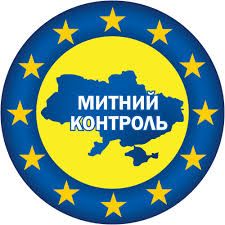Legal regulation of customs control and international trade
Introduction
International trade is an important element of the global economy, ensuring the exchange of goods and services between countries. One of the key aspects affecting international trade is customs control. Customs control is aimed at regulating the movement of goods across borders, ensuring national security, protecting the economic interests of the state and complying with international obligations.
Basics of customs control
Legal framework
Customs control is regulated by international treaties, regional agreements and national legislation. The main international documents regulating customs control include the following:
- The Kyoto Convention on the Simplification and Harmonization of Customs Procedures: sets standards and guidelines for customs procedures.
- General Agreement on Tariffs and Trade (GATT): regulates the principles of international trade and customs tariffs.
- The legal framework of the World Trade Organization (WTO): includes agreements governing trade in goods, services and intellectual property.
At the national level, customs control is regulated by the Customs Code and other regulatory acts that define customs clearance procedures, tariff and non-tariff regulation.
Principles of customs control
The basic principles of customs control include:
- Legality: customs control is carried out in accordance with the law.
- Transparency: customs procedures should be clear and understandable for all participants.
- Non-discrimination: the same rules apply to all economic operators.
- Efficiency: Customs control should be effective and minimize the impact on trade.
- Protection of national interests: customs control is aimed at protecting the economic, environmental and security interests of the state.
Customs procedures
Customs clearance
Customs clearance is a process that includes the declaration of goods, their inspection and payment of customs duties. The main stages of customs clearance include:
- Submission of a customs declaration: the economic operator submits a declaration in which he indicates the data on the goods.
- Verification of documents: the customs authorities check the compliance of documents with the legal requirements.
- Inspection of goods: if necessary, customs authorities conduct a physical inspection of goods.
- Payment of customs duties: payment of duties, taxes and other fees provided for by law.
- Release of goods: after all procedures are completed, the goods can be released into free circulation.
Customs regimes
Goods can be moved across the border in various customs regimes, including:
- Import: import of goods for free circulation in the country.
- Export: the export of goods from the country for free circulation abroad.
- Transit: the movement of goods through the territory of a country without their release into free circulation.
- Temporary import/export: the import or export of goods for a certain period of time without paying customs duties.
- Customs warehouse: storage of goods under customs control without payment of customs duties.
Regulation of international trade
Tariff regulation
Tariff regulation includes the establishment of customs tariffs for the import and export of goods. Customs tariffs may be:
- Ad valorem: set as a percentage of the value of the goods.
- Specific: set in fixed units (for example, per kilogram or liter).
- Combined: combine ad valorem and specific elements.
Non-tariff regulation
Non-tariff regulation includes various measures that affect international trade but do not involve customs payments. Among them:
- Quotas: restrictions on the quantity or value of goods that can be imported or exported.
- Licensing: the requirement to obtain a permit to import or export certain goods.
- Sanitary and phytosanitary measures: standards aimed at protecting human, animal and plant health.
- Technical barriers to trade: requirements for quality and safety of goods. You may be interested in the following articles: legal advice, legal advice, analysis of documents, legal analysis of the situation, written advice, verification of documents by a lawyer, lawyers documents, online legal advice, online lawyer, legal opinion, legal opinion of a lawyer, lawyer online.
International trade agreements
International trade agreements are aimed at facilitating and liberalizing trade between countries. The main types of agreements include:
- Multilateral agreements: concluded between many countries (e.g., WTO agreements).
- Regional agreements: concluded between countries in a particular region (e.g., the EU-Ukraine Association Agreement).
- Bilateral agreements: concluded between two countries.
Conclusion.
The legal regulation of customs control and international trade is a complex process that includes various aspects ranging from customs clearance and tariff regulation to non-tariff measures and international agreements. The effectiveness of this regulation depends on the clarity and transparency of legislation, compliance with the principles of non-discrimination and protection of national interests. In today's globalized environment, it is important to strike a balance between facilitating international trade and protecting the economic and security interests of the state.

































